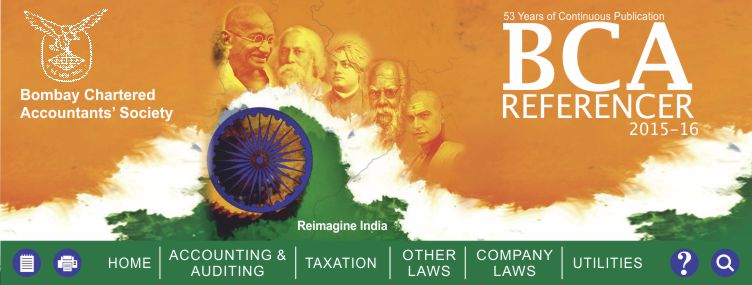|
To test
|
Name of Ratio
|
Formula
|
Parties interested
|
Industry norm
|
|
Liquidity and Solvency
|
|
Current Assets
Current Liabilities
|
Short-term creditors, investors, money lenders & like
parties
|
2:1
|
|
ii)
|
Liquid/Quick/
Acid Test Ratio
|
|
Current assets - Stock - Prepaid Expenses
Current
Liabilities - Bank Overdraft - Prereceived Income
|
-do-
|
1:1
|
|
iii)
|
Absolute Liquid Ratio
|
|
Cash + Marketable securities
Quick Liabilities
|
-do-
|
1:1
|
|
|
Proprietor’s Fund
Total Assets
[Proprietor’s funds = Equity Capital + Preference Capital +
Reserves and Surplus + Accumulated funds - Debit balances of P & L
A/c and Miscellaneous Expenses]
|
-do-
|
60% to 75%
|
|
Capitalisation
|
|
Debt
Equity
[Debt = Long/Short-term loans, debentures, bills, etc, Equity =
Proprietor’s funds]
|
-do-
|
2:1
|
|
ii)
|
Capital Gearing Ratio
|
|
Fixed cost funds
Funds not carrying fixed cost
[Fixed cost funds = Preference share capital, Debentures, Loans
from banks, financial institutions, other unsecured loans].
[Funds not carrying fixed cost = Equity share capital +
undistributed profit - P & L A/c (Dr. Bal.) - Misc. expenses].
|
-do-
|
2:1
|
|
Profitability and management efficiency
|
|
Gross Profit x 100
Net sales
|
Shareholders, Long-term Creditors, Government
|
20% to 30%
|
|
|
Net Profit x 100
Net sales
[Net profit may be either Operating Net profit, Profit before tax or
Profit after tax].
|
-do-
|
5% to 10%
|
|
iii)
|
Return on Capital Employed (ROCE)
|
|
Net profit x 100
Capital employed
[Capital employed = Fixed Assets + Current Assets - Current
Liabilities].
|
-do-
|
-
|
|
iv)
|
Return on Proprietors fund
|
|
Profit after tax
Proprietor’s funds
|
-do-
|
-
|
|
|
Profit after tax less pref. Dividend x 100
Equity
Share Capital
|
-do-
|
-
|
|
vi)
|
Earnings per share [EPS]
|
|
Profit after tax less pref. Dividend
Total No. of
Equity Shares
|
-do-
|
-
|
|
vii)
|
Dividend per share [DPS]
|
|
Total Dividend paid to ordinary shareholders
Number of
ordinary shares
|
Shareholders, Investors
|
-
|
|
Management efficiency
|
|
Cost of goods sold
Average Stock
|
Management
|
5 to 6 times
|
|
ii)
|
Debtors Turnover Ratio
|
|
Debtors + Bills receivable x 365
Net Credit
sales
|
Management
|
45 to 60 days
|
|
iii)
|
Debtor’s Turnover Rate
|
|
Credit sales
Avg. Debtors + Bills receivable
|
Management
|
60 to 90 days
|
|
iv)
|
Creditor’s Turnover Ratio
|
|
Creditors + Bills payable x 365
Credit purchases
|
-do-
|
-
|
|
v)
|
Creditor’s Turnover Rate
|
|
Credit purchases
Average Creditors
|
-
|
-
|
|
|
Operating Costs x 100
Net sales
[Operating Cost = Cost of goods sold + Operating expenses (viz.
Administrative, selling & finance expenses)]
|
-
|
-
|
|
Number of times preference dividends covered by net profit
|
Preference shareholders’ coverage ratio
|
Net profit (after Interest & Tax but before equity
dividend)
Preference Dividend
|
Preference shareholders
|
-
|
|
Number of times equity dividends covered by net profit
|
Equity shareholder’s coverage ratio
|
Net profit (after interest, tax & Pref. Dividend)
Equity Dividend
|
Equity shareholders
|
-
|
|
Number of times fixed interest covered by net profit
|
Interest coverage ratio
|
Net profit (before Interest & Tax) (PBIT)
Fixed
interests & charges
|
Debenture holders, Loan creditors
|
-
|
|
Relationship between net profit and total fixed charges
|
Total coverage ratio
|
Net profit (before Interest & Tax) (PBIT)
Total
fixed charges
|
Shareholders, investors, creditors, lenders
|
-
|
|
The idle capacity in the Organisation
|
Fixed expenses to total cost ratio
|
Fixed expenses
Total cost
|
Management shareholders
|
-
|
|
Material consumption to sales
|
Material consumption to sales ratio
|
Material consumption
Sales
|
Management
|
-
|
|
Wages to sales
|
Wages to sales ratio
|
Wages
Sales
|
Management
|
-
|
|
The future market price of a share
|
Price earning ratio
|
Market price of a share (MPS)
Earnings per share
(EPS)
|
|
|
